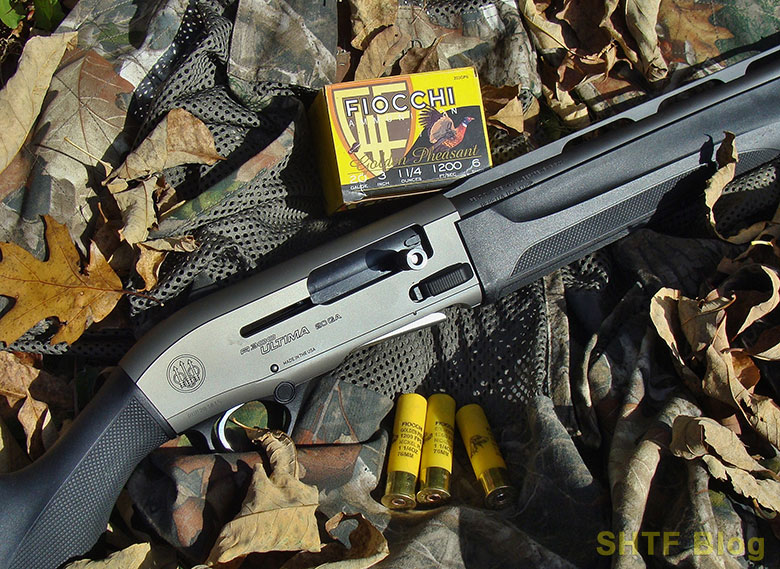
Looks as if there’s a justifiable share of confusion exists concerning shotgun gauges and shotgun vernacular on the whole, even amongst skilled shooters. I first picked up on this throughout an period when “scatterguns” have been the deal-sealing alternative of regulation enforcement. Those that attended my company’s high-speed fight shotgun program arrived with intensive handgun backgrounds, and plenty of have been properly versed in rifles.
Nevertheless, the shotgun was rife with mysteries to incorporate projectiles, varied load choices and infrequently, even “gauges.” The complete subject is a full sufficient plate to dish out by a separate put up. In the meantime, particularly for these with curiosity in procuring a extremely versatile firearm, the shotgun’s “gauge” system offers a logical start line.
The Gauge System
The dialog begins with the distinction between a rifle (or handgun), and “smoothbore” shotgun. Rifles are designed to fireside single projectiles depending on exact barrel engagement and gyroscopic stability to stop the erratic results of bullet tumbling. The bullet’s nose-forward flight is maintained by “rifling”; a collection of spiral grooves minimize into the bore’s floor that correspond with the diameter of the bullet – its “caliber.”
Since a caliber equals one hundredth of an inch, by U.S. requirements, a real .50-caliber barrel, measured groove-to-groove, would run a half-inch. A extra acquainted instance, the .223 Remington, really fires .224-caliber bullets. Per NATO and/or European metric requirements, the identical “caliber” is 5.56 mm.
The necessity to “gauge” projectiles to their barrels predates rifling, and the smoothbore system was primarily based on weight. These days a quarter-pounder equals a considerable dose of ldl cholesterol, however in years passed by, an brisk shoulder-fired instance supplied a way to passive ponderous pachyderms – for these with the fortitude to endure its Newtonian results.
In spherical type its lead projectile, if “gauged” to slide by the bore, would weigh 4-ounces. At four-to-the-pound, per the British “Gauge“ system, it could thus be categorized as a four-bore – or 4-Gauge. The “smaller” however nonetheless formidable 8-bore was the higher restrict for many shooters.
Fortunately, these large spheres ultimately gave approach to lighter large-caliber bullets, stabilized by rifled barrels. However the gauge system endured for smoothbore shotgun barrels meant to shoot a number of projectiles often known as “shot” pellets.
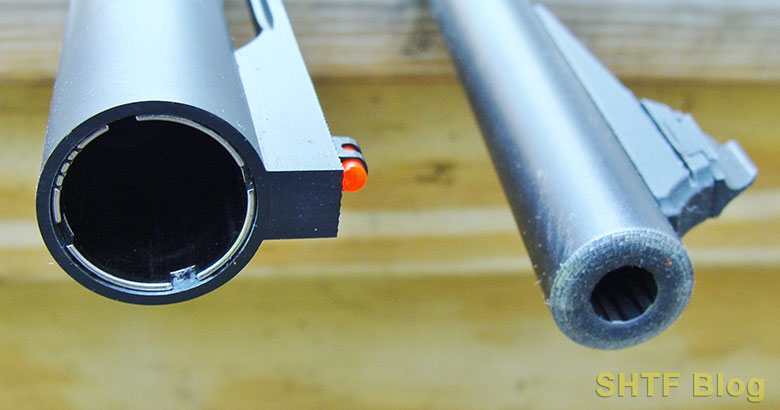
A way more tractable instance is the semi-obsolete 16 Gauge, which nonetheless affords a pleasant steadiness of payload vs recoil in an appropriately sized shotgun (it’s potential to scale back shotgun recoil). Every lead ball, if sized to its bore diameter, ought to weigh 1-ounce. Simple arithmetic signifies 16 to the pound, its gauge. Right now’s extra common 12 gauge has a bigger bore which, in idea, ought to require solely twelve, weighing 1 1/8-ounces apiece.
The weights of those spheres additionally approximate their commonplace shot payloads. Nevertheless, significantly in respect to the ever-popular 12 Gauge, quite a few load choices can be found above or beneath that weight. Additionally, all the gauging course of has all the time been “approximate.” Right now’s shotgun barrels are produced on fashionable equipment to dimensional specs, however once more, significantly concerning the 12 Ga., appreciable dimensional latitude exists. Extra on this shortly.
Gauges, Previous and Current
It’s potential to come across shotguns in a big number of gauges, from the above behemoth 4-bores to tiny 36 Ga. weapons. However right now’s choices have advanced to a shorter and extra sensible record. Current choices, from large-to-small, embrace 10, 12, 16, 20, and 28 Gauge, together with the .410-bore (which is definitely a caliber approximating a 68 Ga.).
Sometimes, small-bore shells seem from offshore sources in obscure gauges just like the 24 and 32 Ga., and the mighty 8 Ga. continues to be produced domestically as a specialised industrial load.
Amongst right now’s frequent picks, the ten Ga. is the viable higher restrict, not solely as a result of recoil, but additionally as a result of it constitutes the federal most allowed for migratory waterfowl. Gross sales spiked as soon as non-toxic shot grew to become a waterfowling requirement however, of late, they’ve decreased as a result of a stronger model of the massively common 12 Gauge.
Alongside an identical vein, earlier on, the introduction of magnum-ized 20 Gauge hundreds ultimately eroded 16 Ga. gross sales. Likewise, though the wonderful 28 Gauge continues to be out there, most of right now’s shooters are in all probability extra aware of the .410; one other load that ultimately appeared as a “magnum” model.
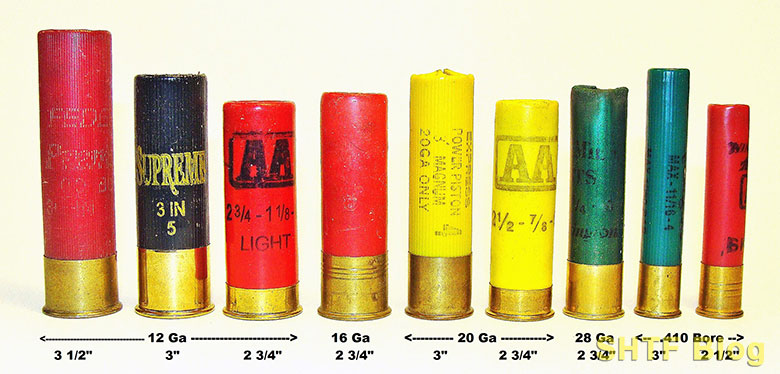
Commonplace vs Magnum Masses
Like right now’s gauges, their now commonplace and magnum hundreds are evolutions of earlier shell configurations. The size of an ordinary 12, 16, 20, and 28-Gauge shell is now 2 ¾-inches. Such hundreds properly cowl most shotgun chores from claybirds by small sport and upland birds, in addition to protection.
If waterfowl and turkeys make the record, longer and extra highly effective 3-inch magnum variations can be found for all, besides the 16 Gauge. As famous above, the 12 Ga. even features a current 3 ½” Tremendous-magnum, marketed to compete with 10 Gauge.
On the small finish of the spectrum, an ordinary.410 shell is 2 ½”. The three” Magnum evolution boosted its skimpy ½-ounce shot cost to 11/16-ounces – near the longstanding ¾ oz. payload of 28-gauge shells. However the lithe 28 Ga. not too long ago acquired a lift through a 3” Magnum, which fires payloads exceeding the 20’s commonplace 7/8 oz. shot-charges.
Extra About Shell Lengths
The most recent rage is ultra-short 12 Ga. Mini-shells, designed to spice up the capability of tubular pump-gun magazines – in weapons able to feeding them reminiscent of Mossberg’s 590 Sequence.
Of their respective gauges, shorter shells (together with the “minis”) will be safely fired by weapons with magnum-length chambers. However not in reverse!
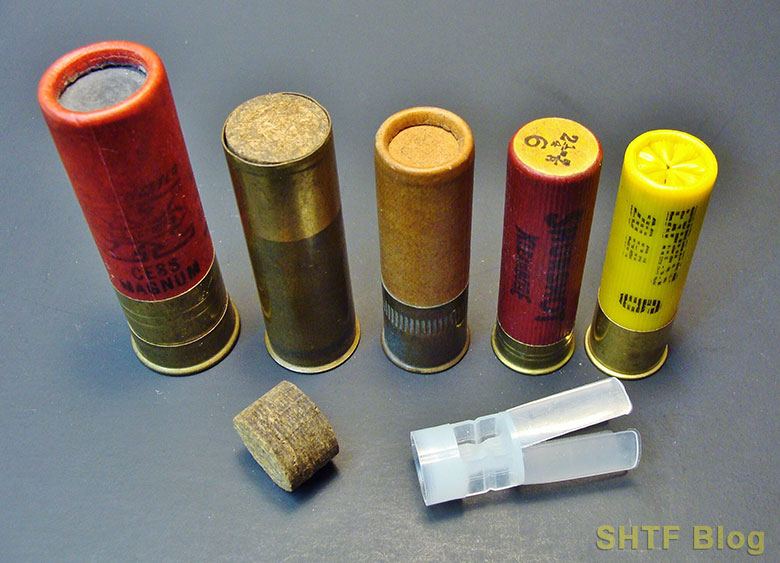
And even right now’s standard-length shells will not be secure all weapons. Many older shotguns have been chambered to fireside shorter (and infrequently milder) shells of two ½” – or much less. Thus, some that settle for a contemporary shell may produce disagreeable penalties. Concerning the reference to “shells,” early black powder shotgun cartridges (circa late-1800s) typically featured brass instances sealed by cardboard wads. However, even after the swap to extra environment friendly smokeless powders, pressures remained low sufficient to work with so-called paper “shotgun shells” that have been strengthened by metallic bases.
The late Nineteen Sixties noticed the event of right now’s plastic variations and, by that time, hulls of both materials have been sealed by crimping their mouths – which requires enough chamber house to accommodate the expanded petals. Because of this, a loaded 2 ¾” shell is often shorter than 2 ½” – a possible downside in a short-chambered gun. If unsure, measure the shell by its fired size.
Equally, an unfired 3” Magnum will in all probability slot in a 2 ¾” chamber, however that doesn’t imply it’s secure to shoot. Removed from it! If the crimp petals can’t absolutely open, strain will instantly spike to unsafe ranges. Right now’s shotgun barrels are stamped with their gauge and chamber lengths, however even amongst these that may interchange, a 3-inch Magnum model will not be secure for a 2 ¾” receiver. If unsure, play it secure and seek the advice of a gunsmith.
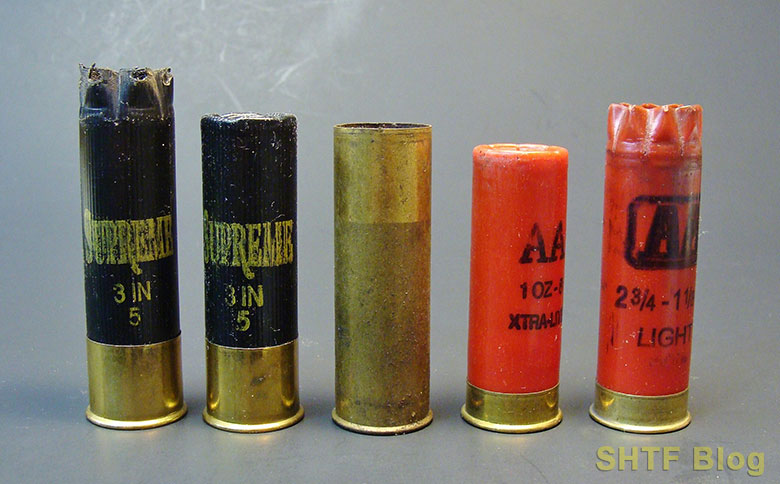
Associated Gauge Particulars
As a result of the 12 Gauge is enormously common it’s been a topic of intensive tinkering, to incorporate lengthened forcing cones and again boring. Lengthened forcing cones present a extra gradual transition of the shot cost to the barrel. In idea, the funnel impact will soften recoil, with potential enhancements to sample uniformity.
If the funnel is prolonged far sufficient to extend the diameter of the barrel, it’s been again bored. The extra bore quantity is purported to enhance shot patterning through “squarer hundreds” (shorter shot columns) that scale back pellet deformation ensuing from barrel contact.
Business Specs & Tolerances
Producers may additionally produce shotgun barrels to differing specs. A real lead 12 Gauge ball ought to measure .729” (about 73-caliber), however the U.S. business commonplace (per SAAMI) permits .020” of leeway. Some current iterations could possibly be nearer to 11-gauge – once more, to supply extra uniform patterns.
Many of the a number of dozen Remington Mannequin 870s in our stock measured near .729”, however some have been .732ish. Remington’s newest 3 ½” semiauto Versa Max is nearer to .737”, and Mossberg advertises their 3 ½” Mannequin 835 with “10-Ga. dimensions” of round .775”! These over-bored barrels present extra quantity for huge portions of onerous non-toxic (or lead) pellets that may double the load of a 2 ¾” goal load.
The European 12 Ga. commonplace is .725”. My 3” Beretta Cell Choke barrels common a tighter .723”, supposedly, to enhance gas-sealing throughout a broad spectrum of worldwide shells. A 12 Ga. Optima HP model available mikes .728”, whereas Beretta’s prior Optima barrels run round .732”. However, like U.S. constructed weapons, some offshore makes are extra capacious. No matter their origins, most marketed as “back-bored” are actually simply over-bored variations.
A possible hazard for bigger bores: Some may produce underpowered “bloopers” with stiffer wads and/or mild hundreds in chilly climate. Stop hearth and test for an obstruction if the report sounds iffy.
Choke Tubes
None of this can matter a lot to the common shotgunner. Nevertheless, the set up of an incompatible choke tube may trigger issues. “Choke” – the constriction of the barrel close to the muzzle – is utilized to manage the dispersion of a shot sample. Older weapons have mounted built-in chokes however, right now, interchangeable choke tubes are the norm.
Precise match is important for the reason that choke’s skirt should seat beneath the floor of the bore. As a result of they’re manufactured to proprietary specs, if unsure concerning match, seek the advice of the web for listings of appropriate mixtures.
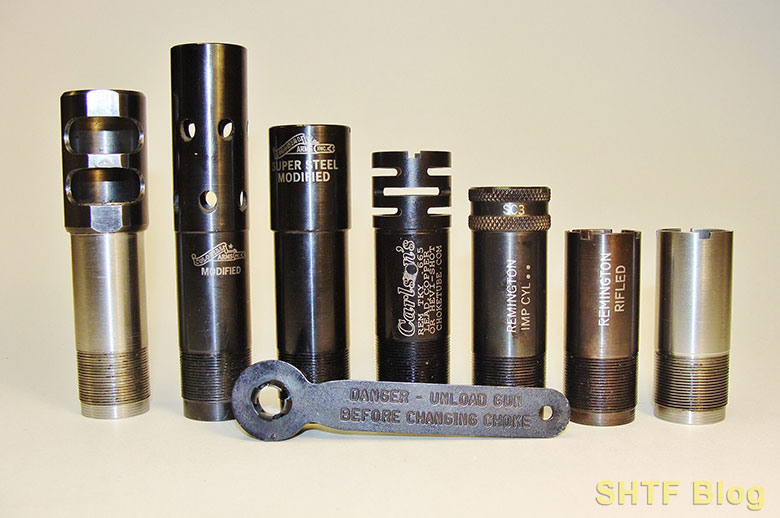
Shotgun Slugs
Most shotguns are smoothbores, designed to fireside shot pellets, however some are enlisted to shoot stable projectiles (slugs) which might be able to helpful accuracy at nearer ranges. In my expertise, safety-wise, frequent Foster-type slugs (massive, soft-lead bullets), aren’t overly fussy concerning bore diameters, – which is smart since some could possibly be fired by choke-constrictions as tight as “full”.
Nonetheless, anticipate higher accuracy from plain-vanilla slugs utilizing barrels nearer to .729”. We fired tons of ‘em (actually) by dozens of LE M-870 pumps (improved-cylinder), and 3-inch teams at 50-yards have been the norm. However Mossberg explicitly warns in opposition to using any stable projectiles of their cavernous M-835 barrels.
Selecting the Greatest Gauge for You
Many of the above data facilities on 12 Ga. weapons, just because they signify the lion’s share of current developments. In case you’re after a fundamental shotgun, it’s extra a matter of choosing an acceptable mannequin in essentially the most sensible gauge. Unique calibers and gauges could also be cool, however with ammo briefly provide, a gun that may digest just about something affords tangible advantages.
Common Goal Picks
To maximise versatility with out breaking the financial institution, it’s onerous to fallacious with a reasonably fundamental 12- or 20-Gauge shotgun. Ammunition for both is broadly distributed in a broad vary of load choices that additionally preserve a lid on ammo value. See my article on the perfect shotgun for homesteaders.
A few weapons that match the invoice are Remington’s Mannequin 870 pumps, and the a number of comparable variations bought by Mossberg.


As a result of each have been produced by the thousands and thousands for many years, elements and equipment are available. I’d skip a 3 ½” 12 Ga. in favor of a 3” mannequin. Though both may also hearth 2 ¾” shells, a 3” model opens the floodgates to quick-change barrels overlaying all bases from large sport (slugs) to protection.
Right now’s 26-28” sporting variations, bought with interchangeable choke tubes, present a helpful basis for additional barrels in shorter lengths, to incorporate rifle-sighted slug variations. See my article on changing a Remington 870 right into a Tactical Shotgun.
If recoil and/or weight are points, think about a 3” 20 Gauge model. In both gauge, most of us will shoot way more 2 ¾” hundreds anyway, just because they cowl most wants for decrease prices with much less recoil. To additional scale back recoil, strive a gas-operated semiauto. Large distinction!
Area of interest Picks
The ten Gauge is extra gun than most of will ever want. The 16 Gauge has loved a classy resurgence, however these constructed on 12 Ga. frames (many) negate its perceived benefits. Load choices are additionally restricted, and extra pricey.
Similar story concerning the 28 Gauge; a neat boutique alternative – if constructed on a correctly scaled body. If not, it’ll in all probability be constructed on a 20 Ga. that provides cheaper taking pictures.
Some individuals choose .410s as starter weapons for youths. They’ll work at nearer ranges for small sport however, for wingshooting, the tiny shot expenses actually relegate them knowledgeable’s instruments. Contemplating the value of shells, the extra sensible different could possibly be a correctly measurement 20 Ga., loaded with “low recoil” shells.
Or, with a provide of fired shells, you can even load your individual. Learn whether or not reloading shotgun shells is value it or not.
Closing Feedback – With a Warning
The takeaway: Not like calibers, increased numbers translate to smaller bores. Thus, a 16 Ga. is roughly .66-caliber, a 20 Ga is about .62-caliber, and a 28 Ga. runs round .55-caliber – nonetheless a lot bigger than a .410, the best step downward of the bunch.
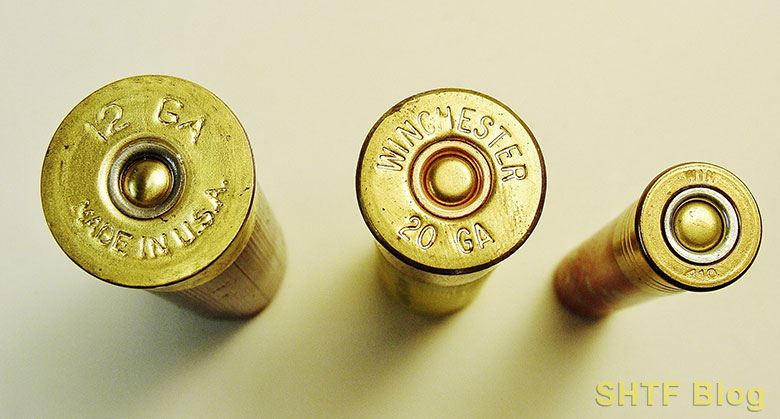
As famous above, as a result of they headspace on their rims, shorter shells of the identical gauge will be fired. However a gauge mix-up can spell catastrophe. Drop a 20 Ga. shell in a 12 Ga. chamber and it’ll disappear. However its rim will dangle up on the chamber’s ahead finish as a catastrophic bore obstruction.
Thankfully, most of right now shells are color-coded, with yellow reserved for the 20 gauge. However, factoring in Murphy’s Regulation, it’s nonetheless value any sanitizing vests or shell luggage when switching to a special gauge.
Lastly, for extra in regards to the fascinating world of shotguns, right here’s a hyperlink to my e book, Shotguns: A Complete Information:
